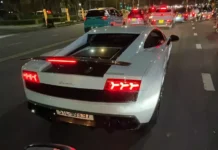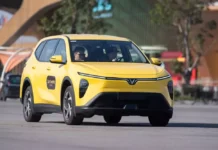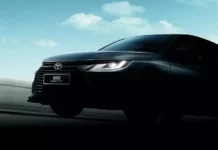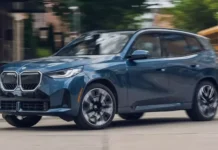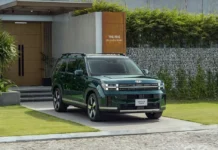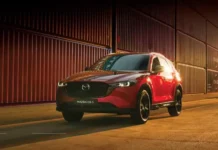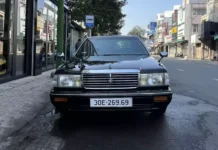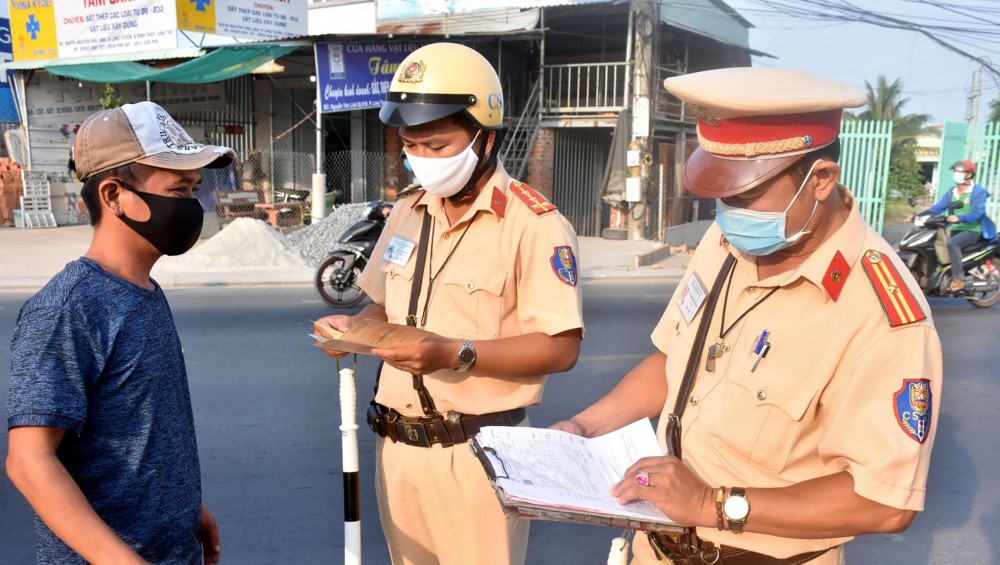Proposal to Change Driver’s License Ratings
As per Article 39 of the New Draft Law on Order, Traffic Safety and Road Traffic, there will be changes to driver’s license ratings. Here are the proposed ratings:
| Driver’s License Rating | Issuing Authority |
| Class A2 | This rating is for riders of two-wheeled motorcycles with a displacement of 50cc to 175cc or equivalent rated power. |
| Class A | This rating is for riders of two-wheeled motorcycles with a displacement of 175cc or larger or equivalent rated power, and for the specified types of vehicles mentioned for Class A2 licenses. |
| Class A3 | This rating is for riders of three-wheeled motorcycles and for the specified types of vehicles mentioned for Class A2 licenses. |
| Class B | This rating is for drivers of motor vehicles with up to 9 seats (including the driver’s seat), trucks (including specialized trucks), tractors with a cargo design weight not exceeding 3,500 kg, and for the specified types of vehicles mentioned for Class B2 licenses. |
| Class C1 | This rating is for drivers of trucks (including specialized trucks, other specialized vehicles), tractors with a cargo design weight ranging from over 3,500 kg to 7,500 kg, and for the specified types of trucks mentioned for Class C1 licenses with a trailer design weight not exceeding 750 kg, and for the specified types of vehicles mentioned for Class B licenses. |
| Class C | This rating is for drivers of trucks (including specialized trucks, other specialized vehicles), tractors with a cargo design weight over 7,500 kg, and for the specified types of trucks mentioned for Class C licenses with a trailer design weight not exceeding 750 kg, and for the specified types of vehicles mentioned for Class B, C1 licenses. |
| Class D2 | This rating is for drivers of passenger cars (including buses) with 10 to 30 seats, and for the specified types of passenger cars mentioned for Class D2 licenses with a trailer design weight not exceeding 750 kg, and for the specified types of vehicles mentioned for Class B, C1, C licenses. |
| Class D | This rating is for drivers of passenger cars (including buses) with over 30 seats, sleeper buses, and for the specified types of passenger cars mentioned for Class D licenses with a trailer design weight not exceeding 750 kg, and for the specified types of vehicles mentioned for Class B, C1, C, D2 licenses. |
| Class BE | This rating is for drivers who can drive the specified types of motor vehicles mentioned for Class B licenses while towing a trailer with a total design weight of over 750 kg. |
| Class C1E | This rating is for drivers who can drive the specified types of motor vehicles mentioned for Class C1 licenses while towing a trailer with a total design weight of over 750 kg. |
| Class CE | This rating is for drivers who can drive the specified types of motor vehicles mentioned for Class C licenses while towing a trailer with a total design weight of over 750 kg, as well as prime movers towing semi-trailers. |
| Class D2E | This rating is for drivers who can drive the specified types of motor vehicles mentioned for Class D2 licenses while towing a trailer with a total design weight of over 750 kg. |
| Class D | This rating is for drivers who can drive the specified types of motor vehicles mentioned for Class D licenses while towing a trailer with a total design weight of over 750 kg. |
In addition, individuals with disabilities who operate three-wheeled motorcycles for people with disabilities will be issued Class A2 licenses. Individuals with disabilities who operate cars with control systems suitable for their disability conditions will be issued Class B licenses.
Under the current Road Traffic Law 2008, driver’s licenses are divided into classes A1, A2, A3, A4, B1, B2, C, D, E, FB2, FD, FE, FC. If the new proposal is passed, Class A1 and B1 driver’s licenses will no longer be issued.
Proposal to Present Documents Integrated on VNeID App
According to Article 38 of the New Draft Law on Order, Traffic Safety and Road Traffic, drivers must carry the following documents while driving:
- Vehicle registration certificate;
- Driver’s license appropriate for the type of vehicle being operated;
- Certificate of technical safety and environmental protection inspection for motor vehicles as prescribed by law;
- Certificate of compulsory civil liability insurance for motor vehicle owners as prescribed by law.
In the case of drivers of specialized motorcycles, they must also have a license or certificate for operating specialized motorcycles appropriate for the type of specialized motorcycle being operated, and one of the types of driver’s licenses specified in Article 39 of the Draft Law, or a certificate of legal knowledge training in road traffic. Drivers of specialized motorcycles must carry the following documents:
- Vehicle registration certificate;
- License or certificate for operating and driver’s license or certificate of legal knowledge training in road traffic;
- Certificate of technical safety and environmental protection inspection for specialized motorcycles as prescribed by law;
- Certificate of compulsory civil liability insurance as prescribed by law.
If the information of these documents has been synchronized with the VNeID digital identity account, drivers are not required to carry the physical copies of the aforementioned documents. Additionally, motorcycle riders participating in road traffic must meet the age and health requirements as prescribed.
Proposal for Police to Stop Vehicles in 4 Cases
Article 55 of the New Draft Law on Order, Traffic Safety and Road Traffic allows Traffic Police to stop vehicles participating in road traffic for the following reasons:
1. When discovering or having grounds to believe there is a violation of the law.
2. When there are violations of the law on order and road traffic safety that require vehicles to be stopped for direct inspection.
3. When there is a written request from an authorized agency to stop vehicles for control in order to ensure security, order, disaster prevention, fire prevention, rescue, epidemic prevention, and control.
4. When there is information, accusations, reports, or recommendations from organizations or individuals about crimes or violations of the law.
Compared to the current regulations, the new proposal includes additional cases where Traffic Police are allowed to stop vehicles, such as stopping for disaster prevention, fire prevention, rescue, epidemic prevention and control, as well as for accusations of crimes or violations of the law.
Proposal for Turning Off High Beams and Turning On Low Beams in 4 Cases
The unnecessary use of high beams can cause frustration and compromise road safety. Therefore, the New Draft Law on Order, Traffic Safety and Road Traffic proposes 4 cases where drivers must turn off high beams and turn on low beams:
– Drivers and riders of specialized motorcycles participating in road traffic between 7 pm of the previous day and 5 am of the following day, or when there is fog, smoke, dust, rain, or inclement weather that reduces visibility, must turn on the following lights:
- Front lighting, either low beams or high beams;
- Rear license plate illumination;
- Position lamps provided in the vehicle’s design.
– Drivers and riders of specialized motorcycles must turn off high beams and turn on low beams in the following cases:
- When encountering pedestrians crossing the road;
- When driving on road sections through residential areas with installed and operating street lighting systems;
- When encountering oncoming vehicles;
- When making a turn at an intersection.
– Drivers and riders of specialized motorcycles must turn on yellow warning lights when performing road work.
Proposal for Cases in which Driver’s Licenses are Invalid
According to Article 5 of the New Draft Law on Order, Traffic Safety and Road Traffic, driver’s licenses will be considered invalid in the following cases:
- Driver’s licenses that are subject to the withdrawal of driving privileges;
- Expired driver’s licenses;
- Driver’s licenses that have been revoked as stipulated in Article 4 of Article 43 of the Draft Law.
Proposal to Restrict Children from Sitting in the Front Seat of a Car
As per the proposal in the New Draft Law on Order, Traffic Safety, and Road Traffic, children under 10 years old or with a height below 1.35 meters will not be allowed to sit in the front seat of a passenger car when participating in road traffic. Additionally, children under 4 years old must be carried in specially designed seats for children (except for passenger transport vehicles as prescribed by road traffic laws). It is the responsibility of drivers to check and ensure that seat belts are properly used for children.
Proposal to Give Way to Pedestrians and Wheelchairs of Disabled Persons at Crosswalks
The New Draft Law on Order, Traffic Safety, and Road Traffic proposes the following regulations:
– On roads with marked crosswalks or other signals for pedestrians, drivers must observe and reduce speed or stop to give way to pedestrians and wheelchairs of disabled persons crossing the road.
– On roads without marked crosswalks for pedestrians, drivers must observe and, if they see pedestrians or wheelchairs of disabled persons crossing or signaling to cross the road, reduce speed or stop to give way.
Inclusion of Regulations on Lane Usage
The New Draft Law on Order, Traffic Safety, and Road Traffic includes 2 regulations on lane usage:
– On lanes designated for a particular type of vehicle, drivers of other types of vehicles are not allowed to enter those lanes. Only priority vehicles can enter priority lanes.
– On two-way roads with two or more lanes in one direction, vehicles participating in road traffic in one direction are not allowed to enter the lanes of the opposite direction.






